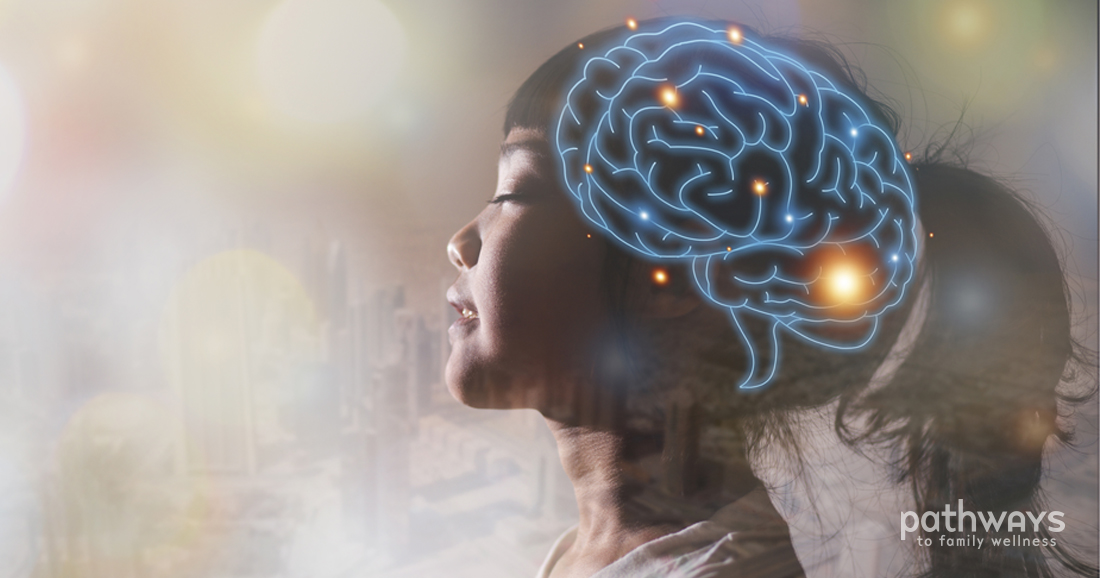Chiropractic and Your Child’s Brain Neuroplasticity
How chiropractic supports brain function throughout life
Regular chiropractic care has innumerable positive effects on your ability to live in health and live the life you deserve. While chiropractic can help reduce pain and prevent injury, it also positively affects your body’s ability to function optimally and heal— without being propped up by drugs and other outside interventions. Chiropractic care has improved the lives of millions of people across the globe.
One cool thing about chiropractic is that your adjustments improve your brain function. Yes, regular care can help you learn new things and be more adaptable to new information. This not only has very important implications for you as you age, but also your kids as they grow and develop.
The Role of Neuroplasticity
Your brain’s ability to cognitively function—being able to manage all your voluntary and involuntary tasks—is called neuroplasticity. To do this, your brain must form new neural connections over time. This is how children learn to walk, talk, read, ride a bike, learn a new subject… In fact, brain neuroplasticity is involved in every activity in our lives. Even as adults, when we learn new things or take up a new hobby, we are adapting ourselves to a new situation and processing information to adjust to new ways of thinking.
Our brain’s ability to respond to stimuli and process information and then convert that into thoughts, behaviors, and abilities depends on our brain being able to form new neural connections. Our very existence depends on brain neuroplasticity.
Neuroplasticity should happen on its own, without any assistance from the outside. A child with optimal neuroplasticity is going to develop and achieve expected milestones. They can pay attention in school, engage with their peers, and respond and adapt to changes in their environment.
The Spine’s Role in Neuroplasticity and Brain Function
The spine is integral to maintaining optimal brain function. The spine—the cervical spine, in particular—is the home to essential nerves and lymphatic delivery systems that are responsible for feeding the brain vital, life-sustaining information.
The nerve bundles housed in the cervical spine carry critical messages to and from the brain, facilitating unconscious and complex functions. Likewise, blood supplied to the brain provides oxygen, amino acids, electrolytes, hormones—essential chemicals and bodily substances for healthy brain performance.
The spine (along with the skull) is the protector of the central nervous system, which consists of the brain and the spinal cord. The spine is made of 33 bones, some fused together, but most that are extremely movable. The cervical spine contains seven bones and is the most mobile (and thus least stable) part of the spine. It is also the closest to the brain and brainstem. When the spine shifts out of alignment (or subluxates), the stress this causes is transferred to the brain supply systems located there. These misalignments, in turn, interrupt the flower of communication necessary for healthy brain function.
When this happens in adults, we may experience neck pain. But before that, we may experience brain fog, outside interventions. Chiropractic care has improved the migraines, exhaustion (fatigue), memory loss, changes in temperament (more bad moods), etc.—things we may not attribute to poor spine health. But these are all signs of negative brain neuroplasticity.
For a child, subluxation most certainly affects brain neuroplasticity. To put it plainly, a subluxated child is disconnected from his or her internal and external environments. These kids may struggle with focus and attention, learning, social and family relationships, impulsivity, or exhibit behavioral issues. These are examples of “negative neuroplasticity.” In these cases, the brain is not making the required neurological connections to adequately respond to stimuli and convert that into appropriate and expected thoughts, behaviors, or ability. These are the children who are diagnosed with attention deficit hyperactivity disorder (ADHD), learning disabilities, autism spectrum disorders, or any number of other behavioral or mental health disorders. They may also live with allergies, asthma, migraines, or other health conditions.
Chiropractic and Brain Neuroplasticity
With the link between the spine and brain evident, researchers have begun to look at how chiropractic may be used as a tool to help preserve positive neuroplasticity.
Clinical studies have already begun, monitoring the effects of chiropractic on patients’ abilities to solve puzzles, multitask, and recall memories.
A growing body of evidence is showing that regular chiropractic care can have a positive effect on brain activity. Chiropractic care removes obstructions in the nervous system and restores the neurological pathways necessary to ensure proper flow of blood and information, which has a positive effect on neuroplasticity. And what we see is that the life of a child improves.



